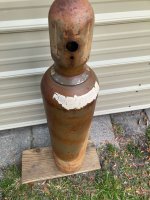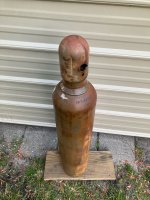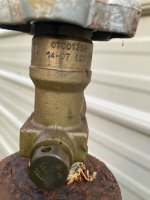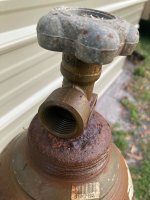disney
Gold Member
- Joined
- Aug 11, 2012
- Messages
- 379
- Location
- orlando fl
- Tractor
- scag turf tiger 61" #2, gx95, sold f525 twice, f725 sold
Greetings all. I was given this cylinder from a retired gentleman (who has no idea what gas it was), and honestly thought it was empty, but after freeing up the cylinder/valve protective cap (took a while as it was rusted..), if I crack the valve, I get what i believe is the sound of gas still under high pressure. is there an easy /cheap way to tell what gas it is, or would there be a marking stamped somewhere? Even just having a bottle to trade would be great, but I would hate to turn it in, if I could still use the gas in it.
thank you for any help you are able to provide
thank you for any help you are able to provide




